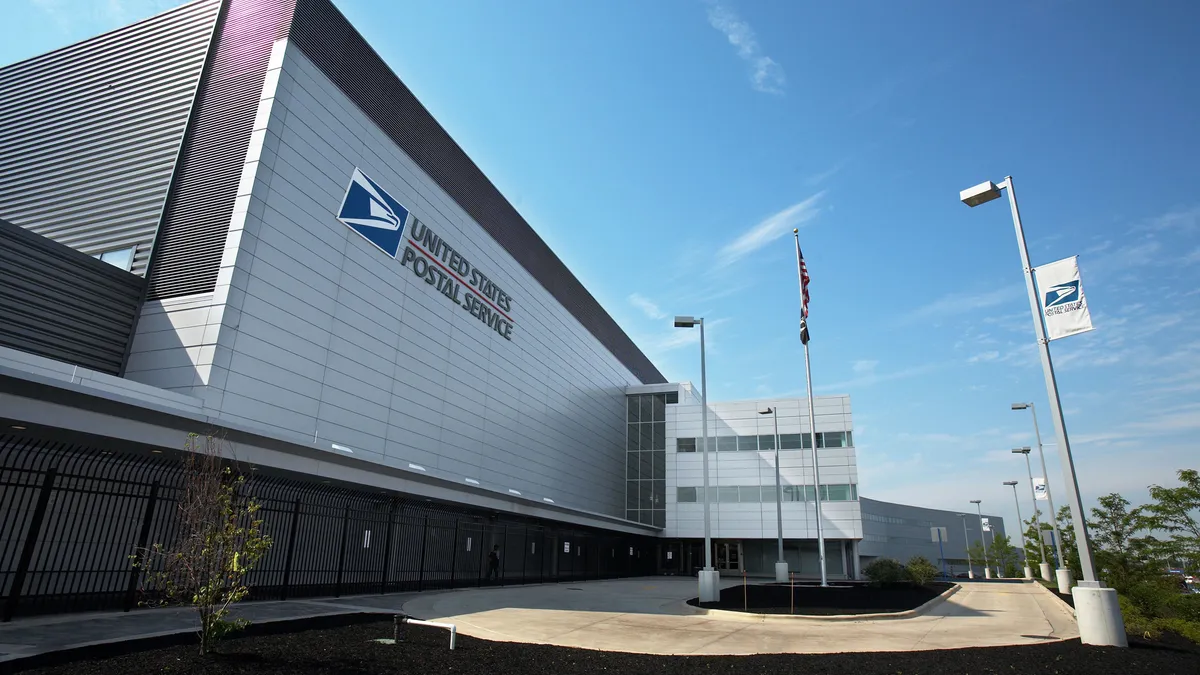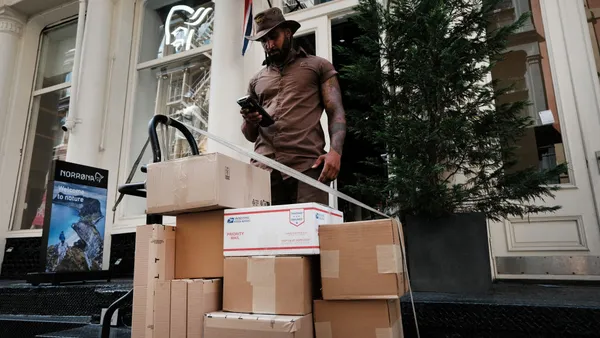Dive Brief:
- Shipping and packages continue to show growth for the United States Postal Service (USPS) as other categories like first class mail and marketing mail post decline in volume and revenue, according to the agency's most recent quarterly report.
- USPS attributed shipping and package growth to "our successful efforts to compete in shipping services, including 'last-mile' e-commerce fulfillment markets and Sunday delivery as well as end-to-end markets," the report said, but added, "the rate of growth is slowing."
- Volume for shipping and packaging was up 5 million pieces, or 0.3%, compared to the same quarter last year. To deal with increasing volume in this area, USPS has —during peak seasons —extended Sunday service and added non-career employees.
Dive Insight:
The increase in shipping and packages has not been enough to offset declines in other mail categories. USPS reported revenue of $17.5 billion, which the agency called essentially flat, and losses of $2.1 billion in the second quarter of its 2019 fiscal year, which ends in September.
"We continue to face challenges from the ongoing migration of mail to electronic alternatives, and we are legally limited under current law in how we can price our products and streamline our legacy costs," USPS Chief Financial Officer and Executive Vice President Joseph Corbett said in a statement. USPS is looking at ways to increase its revenue and decrease its expenses, Corbett said in his statement without expanding on those plans.
USPS CEO and Postmaster General Megan Brennan said on a financial call last week that The Postal Regulatory Commission (PRC) needs to issue its final ruling on its review of the USPS pricing system, which began three years ago. Brennan called on the commission to eliminate the price cap and institute a new system that provides more flexibility.
"The Postal Service continues to operate with a systemic financial imbalance and our ability to generate revenue is constrained by law and our ability to manage cost is equally constrained," Brennan said.
PRC issued a compliance report last month that said USPS needed to "do its best to meet the requirements of the price cap while maximizing unit revenue increases within the product." It did not say anything about potentially eliminating the cap.
The commission released another report this week concluding USPS failed to meet its service goals for fiscal 2018. Service is a measure of the time from when a package is received by USPS to when it is delivered at a home or business. The agency blamed weather for the missed goals. The Commission said this was not an adequate explanation, saying "it is impossible to determine whether the Postal Service is improving its operations because the Postal Service cannot quantify the impact of weather-related disruptions on results."
USPS does have plans for improving its service, though. These include the development of a hurricane preparedness guide and an initiative to look into packages disrupted by unforeseen events. The commission called these plans "reasonable steps."
The financial instability and failure to meet service goals raises concerns for shippers and 3PLs that often rely on USPS for last-mile deliveries.
"The USPS is required by law to deliver to all United States postal addresses in all jurisdictions, regardless of geography and density. This makes them an ideal partner for others that want to deliver to those locations, but do not have the infrastructure or capability to do so," Michael Notarangeli, an executive VP of Maine Pointe, told Supply Chain Dive last year.
Figuring out how to turn this into a profitable model has been a years-long struggle for USPS. Brennan said getting the agency on firm financial footing will require some regulatory changes.
"We have no illusions tough decisions will be necessary," she said.














